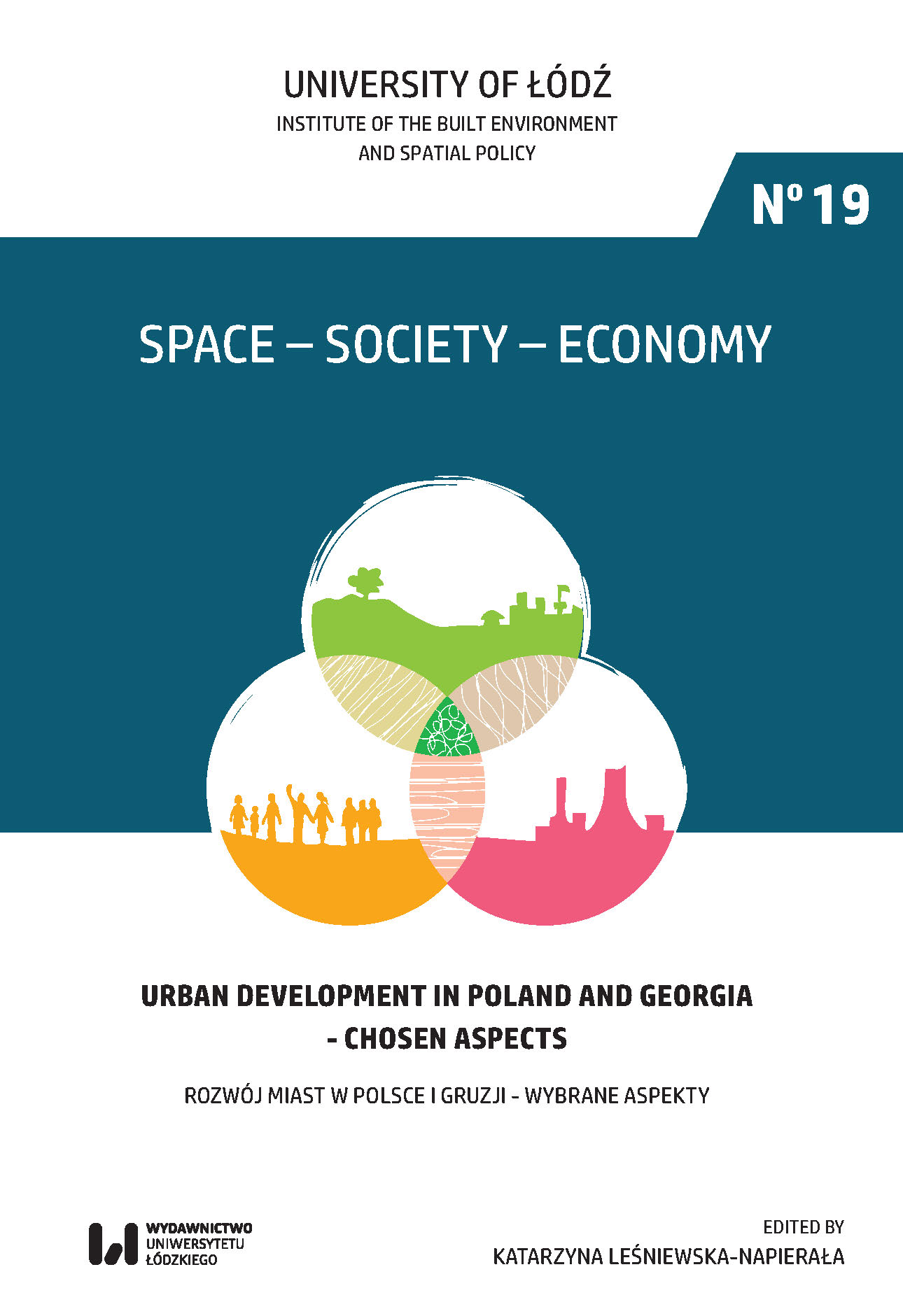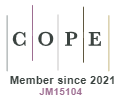Quality of public space of town centre – testing the new method of assessment on the group of medium-sized towns of the Łódź region
DOI:
https://doi.org/10.18778/1733-3180.19.03Keywords:
quality of public space, town center, medium-sized towns, Łódź region, Bełchatów, Ozorków, Piotrków Trybunalski, Radomsko, Wieluń, Zduńska WolaAbstract
This paper presents the outcomes of research on the quality of public space of town center, led in chosen medium-sized towns of Łódź region, using the authors’ method of assessment. Method consists of three elements: graphic valorisation, checklist valorisation and surveys, each of them giving numerical results, which enables comparison of the quality of public space in different aspects. The final effect of the method is ranking of towns, which can be analysed applying adopted criteria. Research revealed that the most important criterion of the high quality of public space of town center is well planned and executed revitalisation program, which introduces positive changes in all aspects identified as factors of quality of public space, between them animation of new activities.
Downloads
References
CABE (Commission for Architecture and the Built Environment), 2004, The value of public space, London.
Google Scholar
Carmona M., Sieh L., 2004, Measuring Quality in Planning. Managing the Performance Process, Spon Press, London and New York.
Google Scholar
DOI: https://doi.org/10.4324/9780203563311
Chmielewski J.M., 2001, Teoria urbanistyki w projektowaniu i planowaniu miast, Oficyna Wydawnicza Politechniki Warszawskiej, Warsaw.
Google Scholar
Crowe T.D., 2000, Crime Prevention Through Environmental Design: Applications of Architectural Design and Space Management Concepts, National Crime Prevention Institute (University of Louisville).
Google Scholar
Dydkowski G., Tomanek R., 2005, Charakterystyka transportu zbiorowego w małych i średnich miastach w Polsce, [in:] Heffner K. (ed.), Małe miasta a rozwój lokalny i regionalny, Wydawnictwo Akademii Ekonomicznej w Katowicach, Katowice: 209– 218.
Google Scholar
Gehl J., 2013, Życie między budynkami. Użytkowanie przestrzeni publicznych, Kraków.
Google Scholar
Edwards P., Tsouros A., 2006, Promoting Physical Activity and Active Living in Urban Environments. The Role of Local Governments, WHO Europe.
Google Scholar
European Council of Spatial Planners, 2005, Guide to Sustainable Development at the Local Level: ‘Try It this Way’.
Google Scholar
European Innovation Partnership on Active and Healthy Ageing, 2012.
Google Scholar
Jacobs J., 1961, The Death and Life of Great American Cities.
Google Scholar
Juchnowicz S., 1965, Metoda wyznaczania zasięgu obszaru centrów miejskich. Niektóre problemy ich struktury funkcjonalno-przestrzennej, Warsaw.
Google Scholar
Karta Przestrzeni Publicznej, 2009.
Google Scholar
Kozłowski S., Wojnarowska A., 2011, Rewitalizacja zdegradowanych obszarów miejskich. Zagadnienia teoretyczne, Łódź: 1–160.
Google Scholar
DOI: https://doi.org/10.18778/7525-557-7
Lorens P., 2007, Tematyzacja przestrzeni publicznej jako wyraz dywersyfikacji struktury urbanistycznej miasta doby globalizacji, [in:] Madurowicz M. (ed.), Percepcja współczesnej przestrzeni miejskiej, Warsaw: 83–92.
Google Scholar
Lynch K., 1984, Good City Form, Massachusetts Institute of Technology, Massachusetts.
Google Scholar
Michalski W., 1989, Bełchatów – miasto ,,nowe”. Próba definicji, ,,Acta Universitatis Lodziensis. Folia Geographica”, 11: 147–165.
Google Scholar
Mierzejewska L., 2011, Przestrzeń publiczna strefy podmiejskiej (na przykładzie Poznania), [in:] Wdowicka M., Mierzejewska L. (eds.), Problemy rozwoju lokalnego i regionalnego na początku XXI wieku, Biuletyn Instytutu Geografii Społeczno-Ekonomicznej i Gospodarki Przestrzennej Uniwersytetu im. A. Mickiewicza w Poznaniu, Seria: Rozwój Regionalny i Polityka Regionalna, 15, Poznań: 85–97.
Google Scholar
Natland J., 2007, Urban by Design: An Evaluation of Public Spaces in Downtown New Westminster, Simon Fraser University.
Google Scholar
Nowakowski M., 1982, Kształtowanie centrum miasta w świetle teorii i praktyki, Kraków.
Google Scholar
Parysek J., Guarino E., Mierzejewska L., 1995, Wybrane problemy teoretyczno-metodologiczne delimitacji centrum miasta, [in:] Kaczmarek J. (ed.), Centra i peryferie dużych miast, transformacja i przyszłość. Pojęcia i metody badawcze, VIII Konwersatorium Wiedzy o Mieście, Łódź.
Google Scholar
Sport England, 2007, Active design. Promoting opportunities for sport and physical activity through good design.
Google Scholar
Sternberg E., 2000, An Integrative Theory of Urban Design, American Planning Association, ,,Journal of the American Planning Association”, Summer 2000.
Google Scholar
DOI: https://doi.org/10.1080/01944360008976106
Trip J.J., 2007, Assessing Quality of Place: A Comparative Analysis of Amsterdam and Rotterdam, ,,Journal of Urban Affairs”, 29 (5): 501–517.
Google Scholar
DOI: https://doi.org/10.1111/j.1467-9906.2007.00362.x
Wallis A., 1979, Informacja i gwar – o miejskim centrum, PIW, Warsaw.
Google Scholar
Wejchert K., 1984, Elementy kompozycji urbanistycznej, Arkady, Warsaw.
Google Scholar
Whyte W.H., 1988, City: Rediscovering the Centre.
Google Scholar
Wojnarowska A., 2015, Przestrzeń publiczna Uniejowa, ,,Biuletyn Uniejowski”, 4: 25–44.
Google Scholar
Wojnarowska A., 2016, Model for Assessment of Public Space Quality in Town Centres, ,,ESRAP”, 23(1): 81–109.
Google Scholar
DOI: https://doi.org/10.1515/esrp-2016-0005
Downloads
Published
How to Cite
Issue
Section
License

This work is licensed under a Creative Commons Attribution-NonCommercial-NoDerivatives 4.0 International License.









